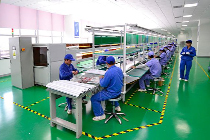With the continuous progress of science and technology and the rapid development of society, the energy issue has become one of the focuses of global attention. In this context, energy saving and emission reduction have become the common responsibility of governments and enterprises. And self-powered switch, as a new type of energy-saving technology, plays an increasingly important role in energy saving.

A self-powered switch is a switching device that can generate electrical energy and control electrical equipment by itself. It converts energy in the environment into electrical energy through a series of technical means, such as photoelectric conversion and vibration energy conversion, to supply power to equipment, thus realizing automatic control and intelligent management. In today's energy shortage, this self-sufficient energy supply has obvious advantages.
First of all, self-powered switches can effectively utilize the tiny energy in the environment. In daily life and industrial production, there exists a large amount of tiny energy, such as light energy and vibration energy. While traditional power supply methods often require large-scale energy reserves and delivery systems, self-powered switches can directly utilize the tiny energies in the environment, convert them into electrical energy, and achieve self-sufficiency. This not only reduces the pressure on energy supply but also can effectively reduce energy waste.
Secondly, self-powered switches are highly environmentally friendly. Compared with traditional energy production methods, self-powered switches do not require the burning of fossil fuels and do not produce harmful gases such as carbon dioxide, which reduces the pollution of the environment. Moreover, self-powered switches also require relatively less energy in their manufacture and operation, further reducing their impact on the environment. In today's pursuit of sustainable development, this environmentally friendly approach to energy supply is in line with the direction of society.
In addition, self-powered switches have the advantage of intelligence in energy saving. Through advanced sensor technology and intelligent control systems, self-powered switches can monitor the energy conditions in the environment in real-time and automatically adjust the working state as needed. This intelligent management can not only improve energy utilization but also reduce unnecessary energy consumption. For example, in the case of sufficient light, the self-powered switch can utilize light energy more effectively and reduce the dependence on other energy sources.
In practical application, self-powered switches have achieved remarkable results in some fields. For example, some intelligent buildings have adopted self-powered switches to supply power, realizing partial decoupling of the power system and reducing the burden of the power system. Self-powered switches are also widely used in the fields of the Internet of Things (IoT) and smart homes to provide a stable power supply for devices and improve the reliability of the system.
However, it is worth noting that while self-powered switches have great potential for energy savings, there are still several challenges. First, it still takes time to improve the level of technology. Self-generation technology involves several fields, including materials science, optoelectronic technology, vibration energy conversion, etc., and requires continuous R&D and innovation. Second, the cost of self-powered switches is relatively high, resulting in limited application in some fields. With the maturity of the technology and the scale effect, it is believed that this problem will be gradually solved.
In summary, self-powered switches, as a new type of energy-saving technology, play an increasingly important role in energy conservation. It utilizes a tiny energy in the environment and has high environmental protection and intelligent management advantages. With the continuous progress of technology and the expansion of application scope, it is believed that self-powered switches will play a more important role in the future energy system and contribute to sustainable development.

 CN
CN








 Home
Home DFM
DFM  Dec 30,2023
Dec 30,2023 
 Smart life: what are the practical functions of a smart home system?
Smart life: what are the practical functions of a smart home system? 
 Dec 28,2023
Dec 28,2023 












